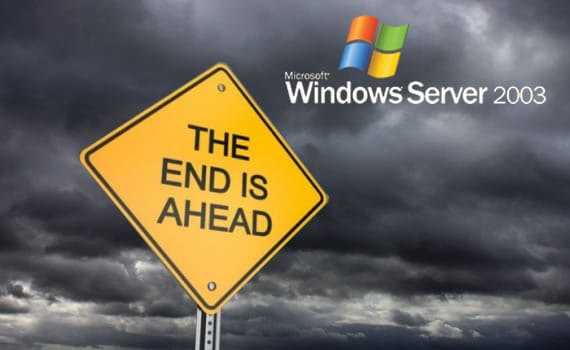Windows Server 2003 End of Life
Still not done anything about migrating from Windows Server 2003? If your answer is ‘no’ then don’t panic but don’t delay any longer. It might seem daunting but the pain of upgrading and migrating will be far less than the pain caused by what might go wrong if you don’t make the move.
We know it’s been around for 12 years and is nice and familiar but…it has been around for 12 years…and Microsoft are on their fourth upgrade since introducing Windows Server 2003. In 2003, Busted (who?) had two number one hits and Gareth Gates also made it to the top of the charts. That’s how long ago it is since 2003. We all need to move on…even the aforementioned popstars managed to do that.

So, what does ‘end of life’ really mean?
No more updates will be developed or released by Microsoft. You will be stuck with an outdated, high-risk IT environment.
Security risk: vulnerabilities will not be patched. Many reports claim that Windows Server 2003 end of life poses the biggest security risk of 2015 as systems are left vulnerable to intruders.
Many applications will cease to be supported on this platform. Potentially, any third party software you run on Windows Server 2003 is at risk of disruption, tampering or theft as soon as the vulnerability of your server is exposed.
Compatibility issues with new software and hardware. If you want to install or upgrade new software or hardware, chances are they won’t run properly on Windows Server 2003. You can see that the consequences of not upgrading have a negative cumulative effect.
Possible compliance issues if you are audited. This is particularly relevant if your business is in a regulated industry. The security risk posed by an unsupported server is very serious and would be classified as non-compliance.
As you can see, not upgrading really isn’t an option.
What are the benefits of upgrading/migrating?
OK, so we’ve already established that you can’t afford not to upgrade, but what are the real benefits you and your business will enjoy by upgrading/migrating from Windows Server 2003?
Whether you choose to go for an entirely cloud-based service or on-site equipment, you will notice significant improvements. It’s not going to be pain-free as you learn to work with a new system but the benefits for your business will include better performance, reduced maintenance requirements, as well as increased responsiveness.
Next steps?
Start making arrangements to upgrade/migrate to the latest platform as soon as possible. This cannot be done overnight and requires careful planning so you really need to start now.
Start thinking about:
- What your ideal situation looks like
- Conduct an inventory of your current Windows Server 2003 environment; what systems and applications are being supported by it; who uses these systems; how do they rely on each other?
- Decide what you need and draw up a list of what you are going to need in the future; what will require most work to migrate and what will require least; consider if you could actually retire some of the applications and systems if necessary
Microsoft has set up a Windows Server 2003 End of Life site that can help you plan your migration – http://www.microsoft.com/en-gb/server-cloud/products/windows-server-2003/
Of course, here at Dunblue, we can help you each step of the way of your migration.


